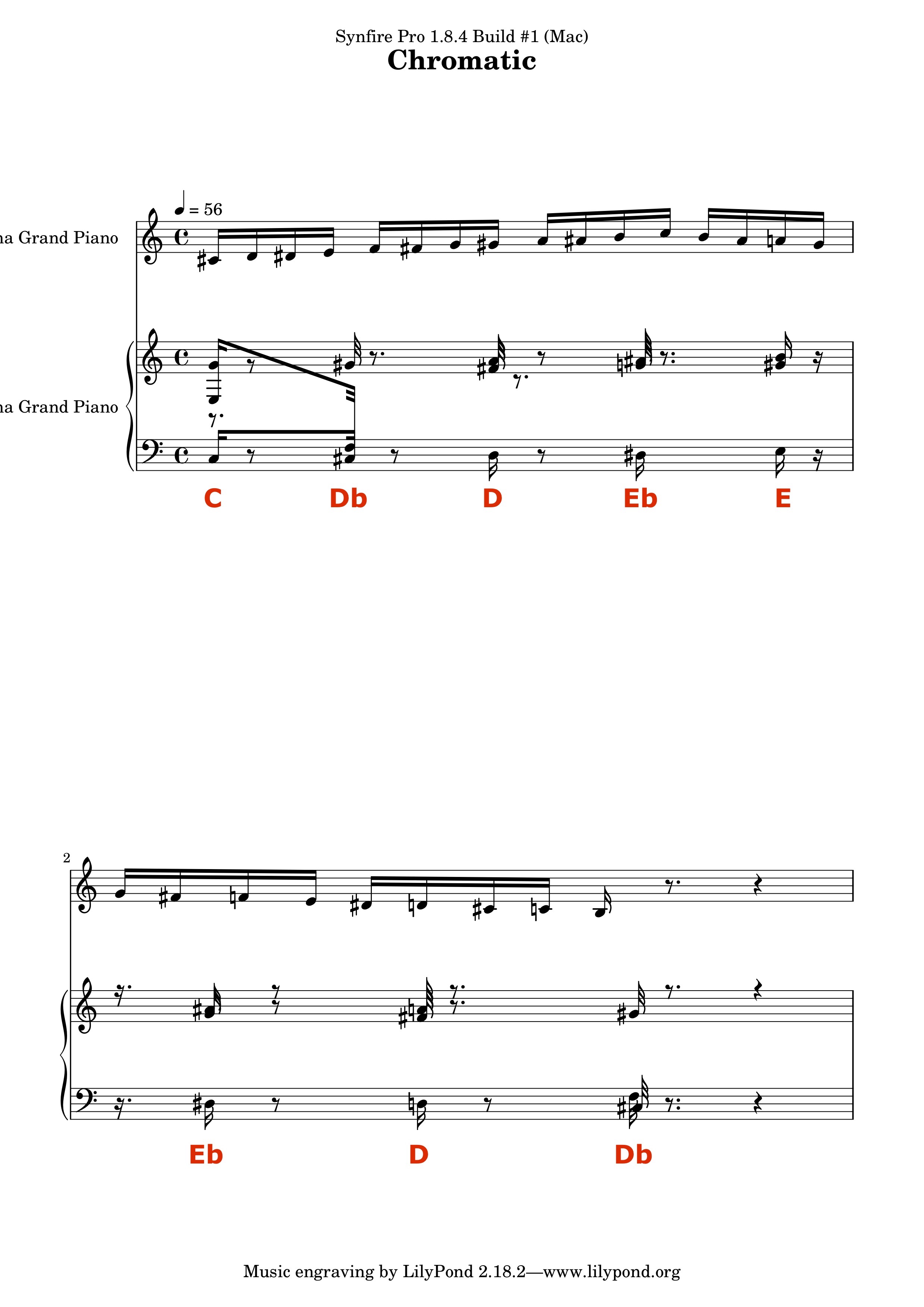A further example.
In this short test I recorded (at a very slooow BPM...)
- a chromatic scale "out of tune". i.e., over a C major chord I began to play the scale from a C# and ended it with a natural B
- an "accompaniment" of perfect major triads chromatically ascending and descending, from C to E then back. Definitley out of time to increase random clashes between chords and chromatic scale.
The Lilypond export approximatively translated all this stuff in notation:

The Interpretation Strategy menu was set on None. The Cooperative flag was left checked.

A C.chromatic Vertical scale was assigned to the C chord via the harmony parameter tab.

The musical result is awful but technically correct: the only scope of this experiment was to test the capabilities of Synfire when dealing with multiple chromatic, dissonant parts. It succeeded. You can listen to it from the attached .mp3. It's very short, don't panic and keep a low volume level :-)
I guess that a good rule of thumb when dealing with chromatic passages could be:
- assign a chromatic vertical scale to any chord(s) supporting the chromatic idea and
- set interpretation Strategy to None (don't bypass it!).
All the best,
Roberto
chromatic_64bit_.mp3

Comments
Sun, 2017-11-19 - 18:17 Permalink
PS -- This was fast to do. About 10 minutes (as I said some days ago, I'm definitely not a racing pianist...)